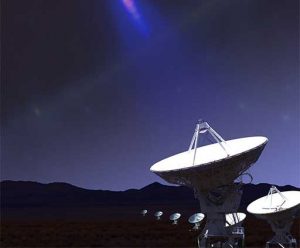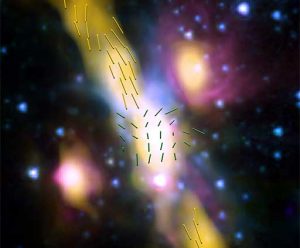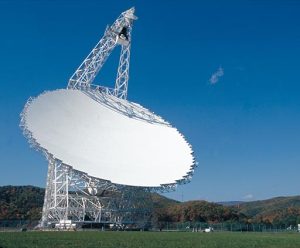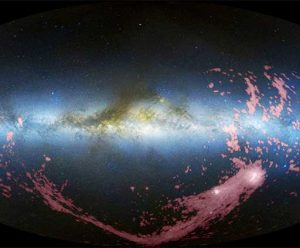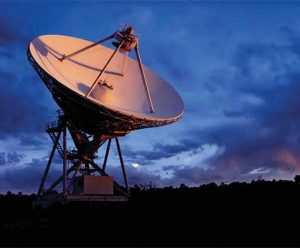Seeking to detect mysterious, ultra-high-energy neutrinos from distant regions of space, a team of astronomers used the Moon as part of an innovative telescope system for the search. Their work gave new insight on the possible origin of the elusive subatomic particles and points the way to opening a new view of the Universe in the future.
Magnetism Common to All Cosmic Jets
Astronomers have found the first evidence of a magnetic field in a jet of material ejected from a young star, a discovery that points toward future breakthroughs in understanding the nature of all types of cosmic jets and of the role of magnetic fields in star formation.
New Technique for Studying Dark Energy
Pioneering observations with the National Science Foundation’s giant Green Bank Telescope have given astronomers a new tool for mapping large cosmic structures. The new tool promises to provide valuable clues about the nature of the mysterious “dark energy” believed to constitute nearly three-fourths of the mass and energy of the Universe.
Astronomers Get New Tools for Gravitational-Wave Detection
Teamwork between gamma-ray and radio astronomers has produced a breakthrough in finding natural cosmic tools needed to make the first direct detections of the long-elusive gravitational waves predicted by Albert Einstein nearly a century ago.
Giant Intergalactic Gas Stream Longer than Thought
A giant stream of gas flowing from neighbor galaxies around our own Milky Way is much longer and older than previously thought, astronomers have discovered.
Record-Breaking Precision Radio Astronomy
Astronomers will tie together the largest collection of the world’s radio telescopes ever assembled to work as a single observing tool in a project aimed at improving the precision of the reference frame scientists use to measure positions in the sky.






